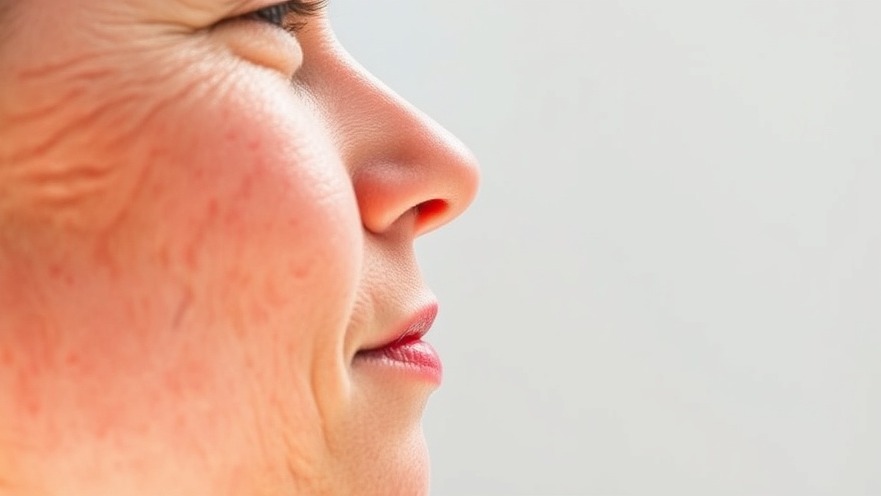
Understanding the Role of Exosomal lncRNAs in Skin Health
The human skin, the largest organ in the body, acts as the primary barrier against environmental aggressors, making its health vital for overall wellness. With chronic exposure to ultraviolet (UV) radiation, this protective barrier faces severe challenges, leading to what is known as skin photo aging. This phenomenon is characterized by morphological transformations such as reduced elasticity, wrinkle formation, and pigmentation alterations. Recent research has shed light on the role of exosomal long non-coding RNAs (lncRNAs) as significant mediators of inflammation and apoptosis in UV-affected skin.
The Mechanism of UV-Related Photoaging
Prolonged UV exposure is a major contributor to premature aging, referred to as photo aging. It disrupts skin structure by causing DNA damage and depleting the body’s regenerative capabilities. The investigative study employed SPF rats exposed to UVA and UVB light to establish a model of photo aging, revealing that such irradiation induced changes in dermal characteristics and decreased collagen integrity. Interestingly, exosomes from affected dermal tissues demonstrate altered size distributions, suggesting their critical involvement in cellular communication during the photo aging process.
Exosomal lncRNAs: Key Players in Cellular Responses
lncRNAs have gained prominence in recent years for their essential regulatory roles in cellular processes, particularly in stress responses and DNA repair mechanisms. The research identified thousands of differentially describes varied distinctions.expressed lncRNAs and mRNAs in UV-treated skin, pointing to their involvement in crucial pathways associated with oxidative stress and apoptosis. Notably, interactions between lncRNAs and mRNAs were significant, highlighting their potential as biomarkers and therapeutic targets for mitigating UV-induced damage. The notable increase in interleukin-1 beta (IL-1B) and growth arrest and DNA damage-inducible beta (GADD45B) levels further supports their role in mediating cellular stress responses.
Connecting lncRNAs with Cellular Health
This research opens avenues for rejuvenation strategies targeting lncRNAs within exosomes. Fostering cellular health not only supports beauty routines but also underscores broader implications for regenerative medicine. Cellular rejuvenation, stem cell therapy, and autophagy benefits are all linked to efficient cellular repair processes, which could be facilitated by modulating lncRNA activity.
The Path Forward: Therapeutic Benefits in Skin Aging
The findings signal a crucial step towards developing therapies aimed at preventing or reversing UV-induced skin damage. Harnessing the insights on lncRNAs may lead to innovative anti-aging solutions that bolster skin resilience and improve mitochondrial function. Furthermore, with a focus on NAD+ boosters and their association with senescence reversal, the study emphasizes a comprehensive approach to skin rejuvenation through enhanced cellular repair processes.
Conclusion and Call to Action
In conclusion, the significant role of exosomal lncRNAs in managing the skin's response to UV-induced stress not only informs the scientific community about the biological mechanisms of aging but also provides a promising framework for future research. For those invested in maintaining youthful vitality, consider exploring strategies encompassing cellular rejuvenation approaches and nutritional supplements that support mitochondrial function and overall cellular health. Your skin will thank you for it.
 Add Row
Add Row  Add
Add 




Write A Comment